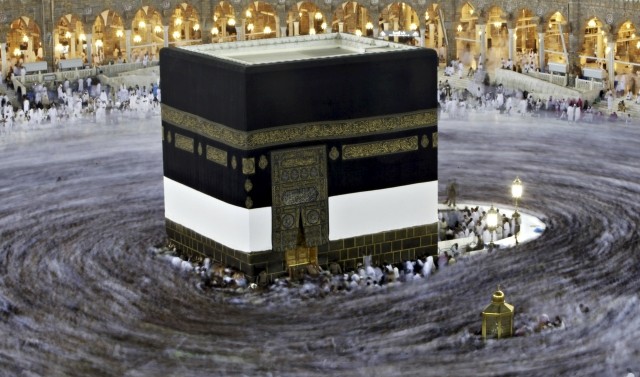Hajj 2012: Muslims' Annual Pilgrimage to Mecca at its Peak [PHOTOS]
Approximately three million Muslim pilgrims from around the world gathered at the holy city of Mecca, on 24 October, to undertake their annual pilgrimage - the Hajj. The pilgrims travel from the Grand Mosque in Mecca to the city of Mina, a temporary encampment outside of Saudi Arabia, and onwards to Muzdalilfah before returning to Mecca.
The city of Mecca, the birthplace of Muhammad and the place of the composition of the Quran, was visited by Muhammad in the seventh century AD. His visit from Medina to Mecca eventually became the first Hajj, giving rise to this annual pilgrimage tradition of the Muslims. However, some of the rituals of Hajj performed at Mina, about seven km from Mecca, stretch back thousands of years before Muhammad and to the time of Abraham, who in Islamic tradition is considered to be a Prophet of Islam and an ancestor of Muhammad.
As part of the Hajj rituals, the pilgrims touch and pray at Kaaba - the black cuboid-shaped granite structure at the centre of the Grand Mosque and one of the holiest artifacts in the Islamic faith - before embarking on their journey to Mina. This particular tradition is called Tawaf az-Ziyarah and must be done before the travel to Mina, where the Saudi Arabian government offers accommodation.
From Mina, the Muslim pilgrims travel to Mt Arafat, also called The Hill of Forgiveness, where Prophet Muhammad gave his last sermon. Pilgrims are supposed to spend an afternoon at the hill and pray and recite Quran until sunset.
"Arafat is the greatest pillar of the haj and I hope the Lord will accept my prayers there. I hope I have enough money so I can come here again so I can repent my sins," a pilgrim from Egypt, Mohammed Omar Emara, was quoted as saying by Reuters.
In yet another Hajj ritual followed at Mina, pilgrims perform the Stoning of the Devil service on the last day of the Hajj as a reenactment of Abraham's pilgrimage to Mecca. According to Islamic historians, Abraham was told by the angel Gabriel to throw seven stones at a devil which came in his way of performing God's command.
The last rituals at Mina culminate in the completion of the Hajj, leading to a three-day celebration called Eid al-Adha. This year Eid ends on the evening of 26 October.
Eid al-Adha: Muslim World Celebrates Traditional Sacrifice Holiday [SLIDESHOW]
Meanwhile check out the latest pictures of Hajj 2012 below.













© Copyright IBTimes 2025. All rights reserved.






















